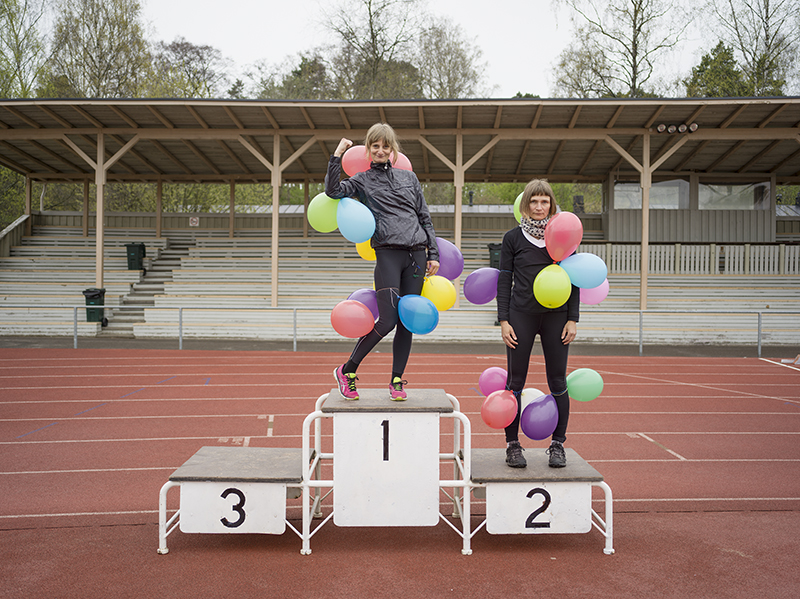
English version included below
C’est léger et profond à la fois. Intime, plein de références culturelles et pourtant si simple. C’est une rencontre avec Elina Brotherus, en plein accrochage, à quelques jours de son exposition Règle du Jeu, Carte Blanche PMU, qui débute mercredi 27 septembre au Centre Pompidou. C’est surtout d’une désarmante sincérité. Comme l’est Elina elle-même. A cet article, il manque juste sa voix si singulièrement placée qu’on la garde longtemps dans l’oreille après l’avoir quittée. Et son sourire.
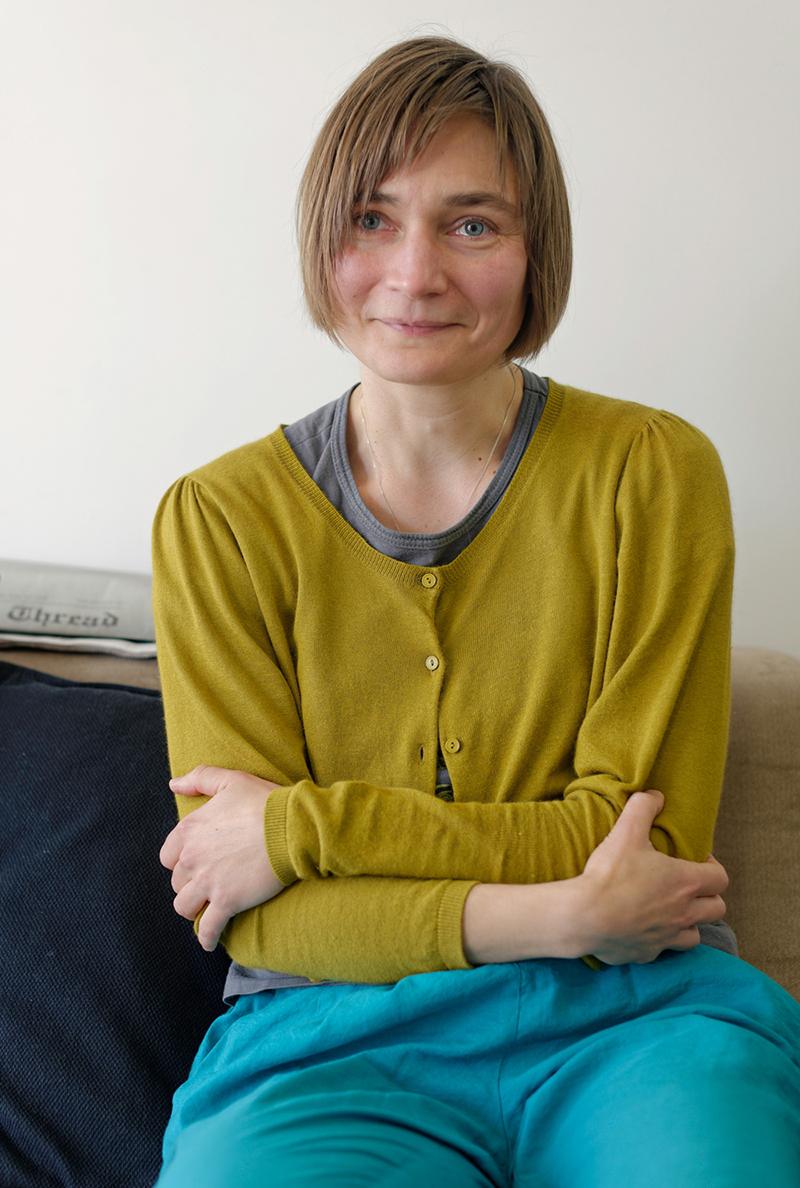
Nous avons commencé par marcher dans le chantier (autour de moi, tout le monde disait comme ça : le chantier), commentaires à l’appui. A cinq jours du vernissage, les photos et vidéos sont toutes déjà en place. Ne reste qu’à régler les projecteurs. Une exposition qui va forcément surprendre, tant Elina Brotherus y renouvelle une partie de son univers visuel (et pas seulement : elle y renouvelle aussi sa démarche, et même son image). Mais sur cela, nous reviendrons dans la seconde partie de cet entretien. Montons plutôt au Café Mezzanine nous attabler pour une longue conversation.
Bruno Dubreuil : Elina, ton oeuvre me touche très intimement. Et elle me touche d’autant plus que je ne l’ai pas aimée tout de suite. J’ai d’abord été un peu soupçonneux à l’égard d’une photographie qui se mettait si ouvertement dans les pas de la peinture.
Elina Brotherus : il est arrivé plusieurs fois que des peintres me fassent le reproche de penser que la peinture était morte et qu’à mes yeux, la photo la remplaçait. Mais moi, je suis du côté des peintres. Je suis une grande admiratrice de la peinture. En fait, le médium n’est pas si important pour moi. Je considère que je ne dessine pas bien et c’est pour ça que je ne suis jamais allé aux beaux-arts. Aujourd’hui, dans les écoles d’art, les jeunes artistes sont pluridisciplinaires, ils ne doivent pas choisir entre peinture et photo. C’est le sujet qui guide, pas la technique.
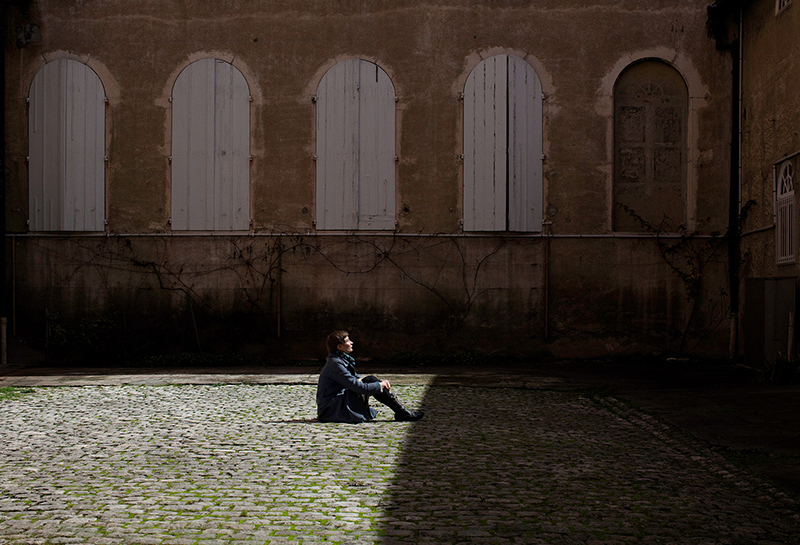
Mais d’où vient ce rapport à la peinture ?
J’ai perdu mon père très jeune. Quand il est mort, ma mère s’est inscrite dans une école d’art. Et elle s’est éclatée dans cette école. C’est comme si mon père l’avait empêchée de vivre ce rêve. Elle pouvait prendre le bateau à Helsinki pour aller voir une expo Turner à Stockholm. Du haut de mes dix ans, je pensais : waoh, elle est folle ma mère, tout ça pour voir des tableaux ! Mais je l’ai vue tellement heureuse. Je crois que mon amour pour la peinture, c’est un lien avec ma mère disparue.
Mais peut-être qu’aujourd’hui, ce rapport à la peinture, c’est quelque chose que j’ai suffisamment exploré. Pourtant, quand on se promène, et qu’on voit … Je ne veux pas dire un sujet , ce n’est pas un beau mot …
…Un motif ?
Oui, ou disons : un truc (et à cet instant, le mot truc n’est nullement un pis-aller. Dans sa bouche, il prend même une dimension assez précise). Ce qui nous fait nous arrêter. Et bien ce truc-là, il a souvent quelque chose à voir avec l’histoire de l’art.
Avant de parler de l’exposition qui va ouvrir et du processus qui est à l’origine de ces nouvelles images, je veux explorer la série qui est peut-être celle qui est la plus marquante dans le corpus d’Elina : Annonciation (2009-2013), série qui traite de son désir d’enfant.
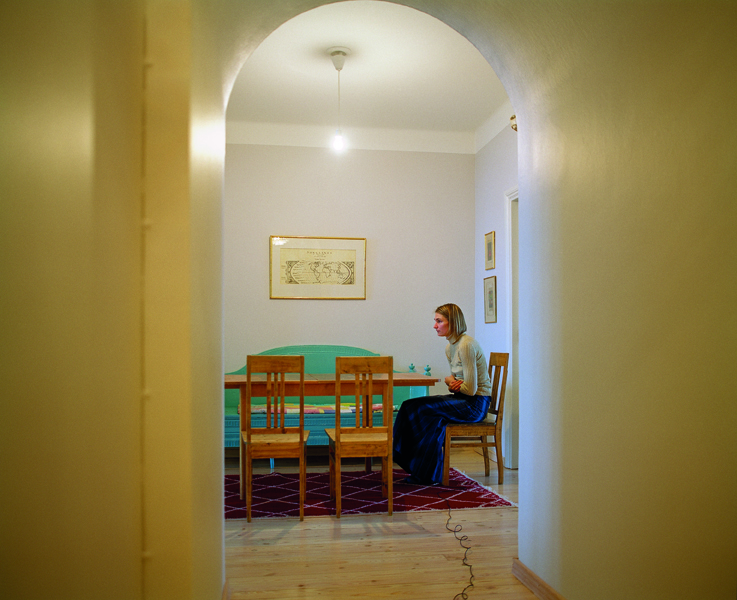
BD : à quel moment as-tu compris que ces photos pouvaient devenir un projet artistique ? Est-ce dès le début ?
EB : à partir de la deuxième photo. La première s’inscrivait dans un projet qui s’appelait Correspondances (présenté à la galerie Hippolyte à Helsinki en 2009). Il s’agissait, avec une copine, Hannele Rantala, d’interpréter chacune la même image. Nous avions choisi cette magnifique Annonciation de Fra Angelico qui est dans le monastère de San Marco à Florence. Mais il se trouve qu’au même moment, je commençais mon traitement. Et je me suis dit que je pourrais peut-être documenter ce processus, dont on ne savait pas à ce moment-là comment il allait évoluer. Ici c’est la vie qui a mené l’oeuvre.
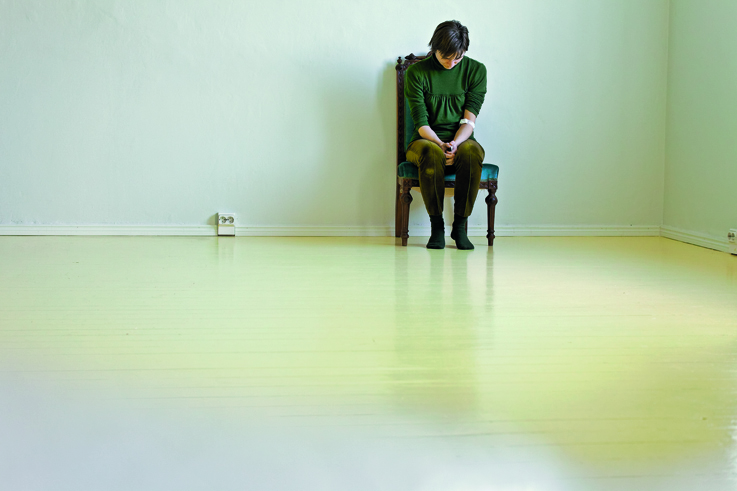
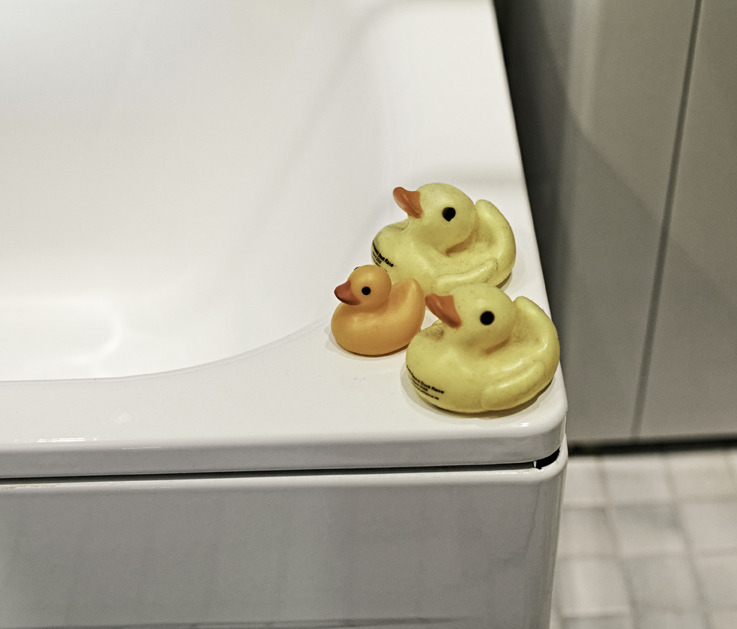
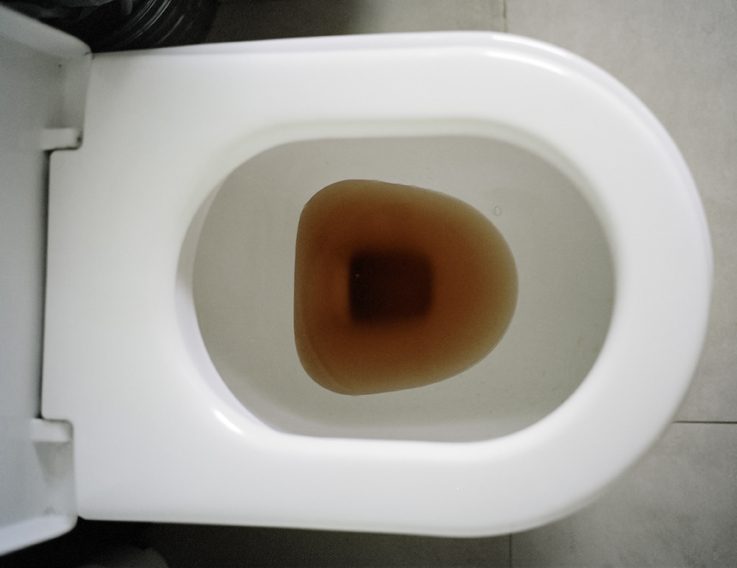
BD : Cette série, commence par des photos qui sont assez symboliques, d’autres qui relèvent de ce que Jeff Wall appelle le « presque documentaire »…
EB : … J’aime beaucoup cette expression : le réel devient presque plus réel quand on le met en scène. Dans cette série, tout existe dans la vraie vie.
Mais on a l’impression que plus on avance dans la série, plus elle devient réaliste, avec des photos très simples, quasiment littérales.
Oui, ça c’est vraiment quand on perd tout l’espoir. On n’a plus besoin de symbole. C’est comme si on perdait une brume qui était devant nos yeux et on se dit : c’est ça ma vie, celle d’une femme qui va vieillir toute seule.
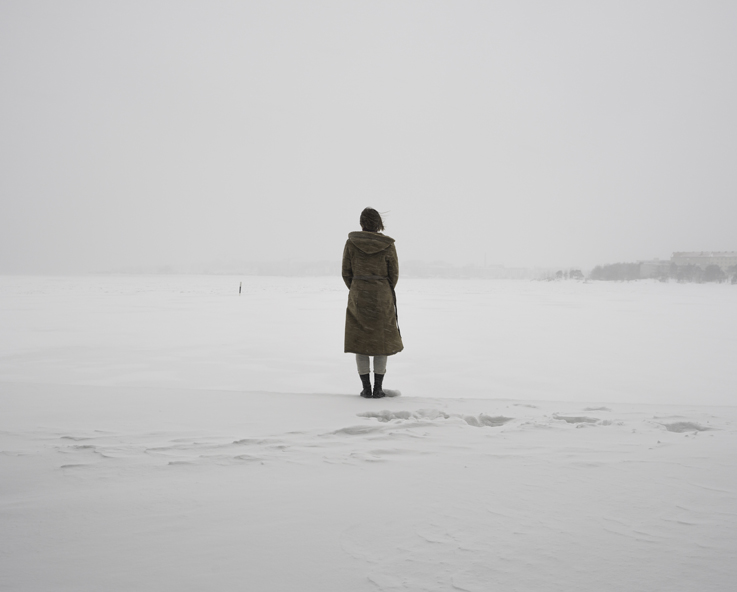
BD : Est-ce que ça a changé ta façon de photographier ?
EB : Je ne sais pas. Mais je fais beaucoup de workshops et je vois tous ces jeunes qui travaillent avec une grande fraîcheur. Quand j’ai fait le livre Carpe Fucking Diem, j’ai demandé à mon graphiste (Teun van der Heijden) : Teun, fais-moi un livre qui me fasse paraître vingt ans plus jeune ! Je n’ai pas envie d’être trop classique, trop mémère ! C’est pour ça aussi que je ne veux pas me laisser enfermer dans la photo à la chambre, mais aussi expérimenter d’autres choses.
Tu pourrais faire de la photo pauvre, avec des appareils donnant des images de qualité moyenne ?
Je m’achète des appareils qui en font mais je n’ai pas encore trouvé comment exploiter ces images. J’ai aussi suivi des stages de techniques anciennes. Et le noir et blanc… J’attends ça depuis des années (je ne l’ai plus pratiqué depuis l’école) ! Me construire un petit labo à la maison et faire des tirages manuellement, j’en rêve. Tout ça m’intéresse beaucoup.
BD : dans tes photos tu es présente comme modèle, que ce soit des autoportraits ou des mises en scène, et tu n’es pas tendre avec toi-même. La lumière est parfois très crue.
EB : mais je me montre comme je suis dans la vraie vie.
Tu ne te maquilles pas dans la vraie vie ?
Oh non ! Je suis trop paresseuse pour ça… Je me suis maquillée quand j’étais jeune, quand je pensais qu’il fallait, mais ça ne m’intéresse pas. Par contre, j’aime bien les vêtements, les motifs, les couleurs.
Tu as quel rapport avec ta propre image ?
Mais cette fille sur la photo, ce n’est plus moi, c’est un personnage !
Ton rapport à l’autobiographie, c’était un moment, c’est un peu terminé ?
Ça revient en boucle. C’est revenu au moment d’Annonciation. Ma stratégie comme artiste, c’est d’accepter les images qui veulent venir.
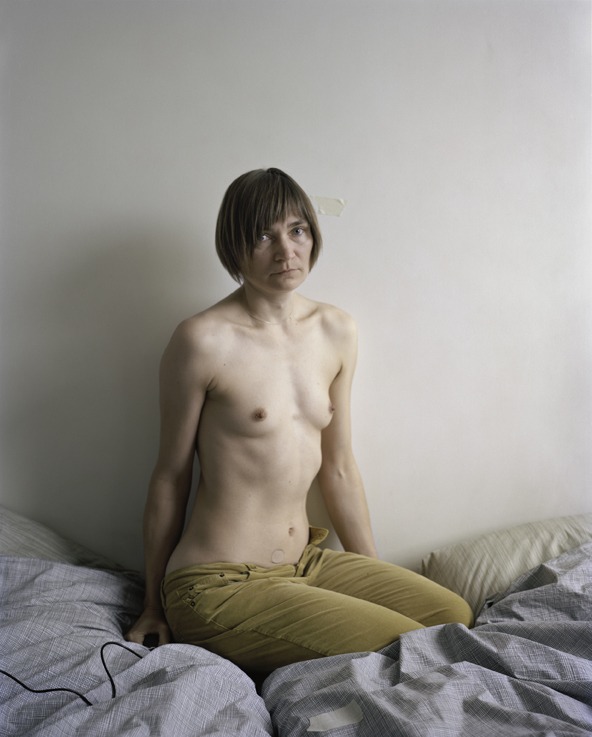
Nous parlons ensuite du choix des images et elle met en avant les noms de Susan Bright et François Cheval qui l’ont aidée dans ses projets.
BD : Même une grande photographe comme toi a besoin d’être aidée dans l’editing ?
EB : Oui, mais je ne montre pas à n’importe qui. J’ai besoin de confirmations par des gens que je respecte. Parce qu’on peut se tromper, surtout quand on est pressé. Ce qui est le cas ici, pour cette commande où je n’ai jamais travaillé aussi vite.
Concrètement, comment se passe la préparation du plan d’accrochage et du choix des images qui vont être exposées ?
Moi, j’imprime des petites images. On ne peut pas faire ça sur ordinateur. Il faut une grande table vide et des petits tirages. Et là tu fais le sequencing.
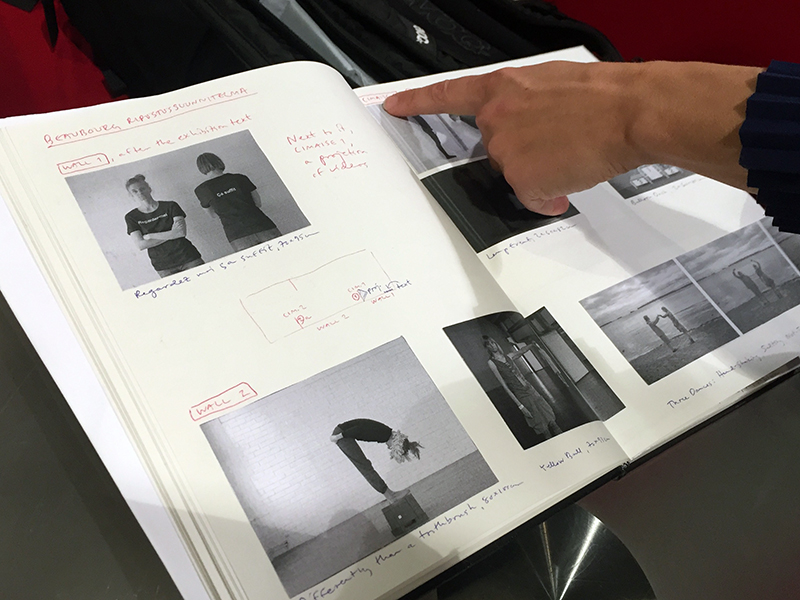
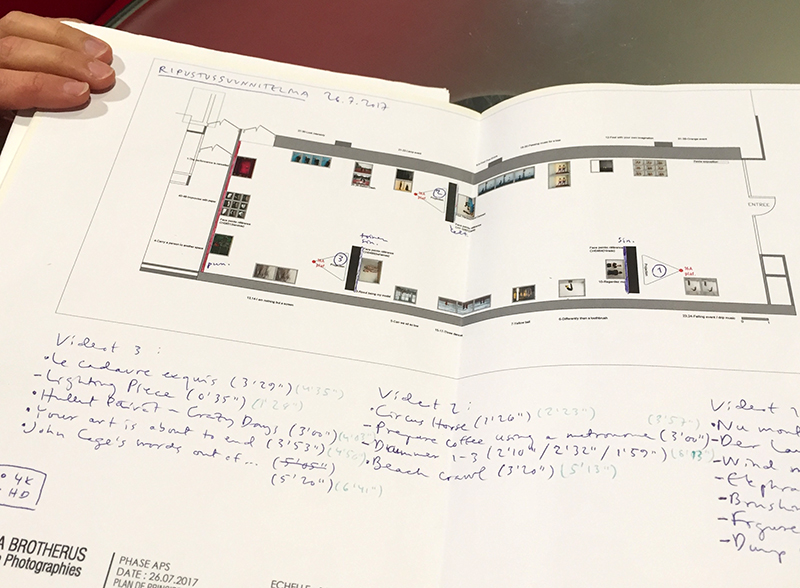
Elina me montre un de ses carnets de notes, le même modèle que celui qu’elle avait quand elle était étudiante (EB : j’ai trois mètres de carnets sur mes étagères). Plusieurs listes de photos, des mises en place très précises des futures cimaises. Au moins trois états du plan général de la galerie. Des maquettes de chaque état de l’exposition. Le plan final n’est qu’une base qui sera encore modifié quand les oeuvres se confronteront à l’espace réel, parce qu’à ce moment-là, on va jouer. Quand on met les oeuvres au sol et que l’on commence à les changer de place pour des questions d’échelle ou de couleurs, je suis heureuse…
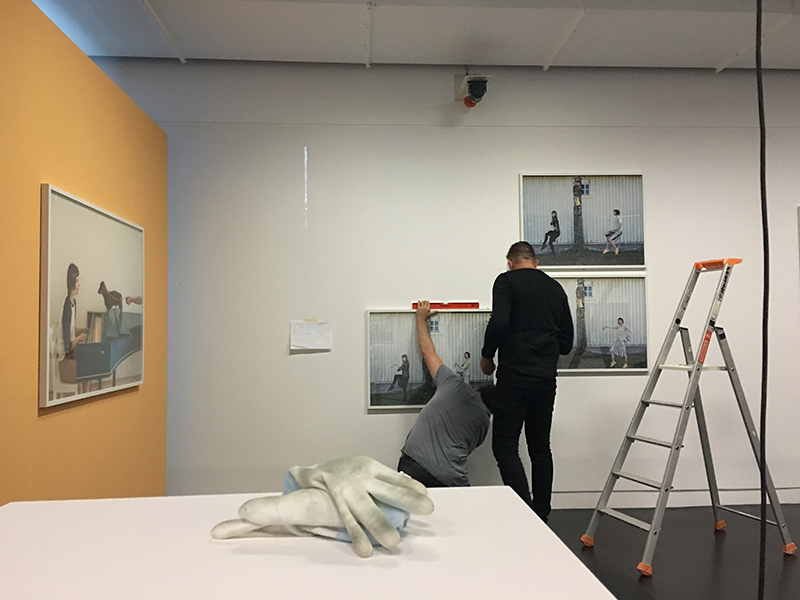
A suivre…
English version
« I didn’t want to be sad anymore » Elina Brotherus, Part 1
It’s light and deep at the same time. Intimate, full of cultural references and yet so simple. It is a meeting with Elina Brotherus, during the hanging of the pictures, a few days before her exhibition Règle du Jeu, Carte Blanche PMU, at the Centre Pompidou, which begins on Wednesday 27 September. It’s above all disarming sincerity. Like Elina herself is. In this article, you just miss her voice so singularly placed that you keep it your ear for a long time after leaving her. And her smile.
We started by walking in the site, with supporting comments. Five days before the opening, the photos and videos are all in place. All that remains is to adjust the projectors. An exhibition that will inevitably surprise, as Elina Brotherus renews part of her visual universe (and not only : she also renews her approach, and even her image). But on that, we will come back in the second part of this interview. Let’s go up to Café Mezzanine to sit down for a long conversation.
Bruno Dubreuil: Elina, your work touches me very deeply. And it touches me all the more because I didn’t like it right away. I was initially a little suspicious of a photography which was so openly in the footsteps of painting.
Elina Brotherus: It happened several times that painters reproached me for thinking that painting was dead and that, in my eyes, the photo replaced it. But I’m on the side of painters. I’m a great admirer of painting. Actually, the medium isn’t that important to me. I don’t think I draw well and that’s why I’ve never been to a fine arts school. Today, in art schools, young artists are multi-disciplinary, they don’t have to choose between painting and photography. It’s the subject that guides, not the technique.
BD : But where does this connection to painting come from?
EB : I lost my father when I was very young. When he died, my mother enrolled in art school. And she had a great time at that school. It’s like my dad had prevented her from living that dream. She could take the boat in Helsinki to see a Turner exhibition in Stockholm. At the age of ten, I thought: wow, my mother is crazy, all this just to see paintings! But I saw her so happy. And I think my love for painting is a link with my missing mother.
Maybe today, this relationship with painting is something I have explored enough. But when you walk around, and you see… I don’t want to say a subject, it’s not a nice word…
BD : … A motive?
EB : Yes, or let’s say: a trick (and at this moment, the word trick is not a pis-aller. In her mouth, it even takes on a rather precise dimension). What makes us stop. Well, this thing, it often has something to do with art history.
Before we talk about the exhibition that will open up and the process that is behind these new images, I want to explore the series that is perhaps the most striking in Elina’s corpus: Annunciation (2009-2013), a series that deals with her desire to have a child.
BD : At what point did you understand that these photos could become an artistic project? Is that right from the start?
EB : From the second photo. The first was part of a project called Correspondances (presented at the Hippolyte Gallery in Helsinki in 2009). I and a friend of mine, Hannele Rantala, had to interpret the same image. We had chosen this beautiful Annunciation of Fra Angelico which is in the monastery of San Marco in Florence. But it turns out that at the same time, I was starting my treatment. And I thought I might be able to document this process, which we didn’t know at the time how it was going to evolve. Here, life is what led the work.
BD : This series, begins with pictures that are quite symbolic, others that are part of what Jeff Wall calls « almost documentary »…
EB : … I like this expression very much: the real becomes almost more real when staged. In this series, everything exists in real life.
BD : But we have the impression that the more we advance in the series, the more realistic it becomes, with very simple, almost literal pictures.
EB : Yeah, that’s really when you lose all hope. We don’t need a symbol anymore. It’s like losing a mist in front of our eyes and thinking : this is my life, the life of a woman who’s going to become an old and lonely woman .
BD: Has it changed the way you photograph?
EB: I don’t know. But I lead a lot of workshops and I see all these young people working with great freshness. When I made the book Carpe Fucking Diem, I asked my graphic designer (Teun van der Heijden): Teun, make me a book that makes me look twenty years younger! I didn’t want to be too classic, a kind of grandma ! That’s also why I don’t want to let myself be locked up in the photo in the big camera, but also experiment with other things.
BD : Could you do poor photography with cameras that give medium-quality images?
E.B : I buy devices that make them, but I haven’t figured out how to use them yet. I also followed training courses in ancient techniques. And black and white… I’ve been waiting for this for years (I haven’t practiced it since school) ! To build me a small lab at home and make manual prints, I dream about it. I’m very interested in this whole thing.
BD: In your photos you are present as a model, whether it is self-portraits or staging, and you are not tender with yourself. The light is sometimes very raw.
EB: But I’m showing myself in real life.
BD : Aren’t you wearing makeup in real life?
E.B : Oh, no! I’m too lazy for that… I put makeup on when I was young, when I thought it was right, but I’m no longer interested. On the other hand, I like clothes, patterns, colors.
BD : What do you think of your own image in the picture?
EB : But that girl in the picture, she’s not me anymore, she’s a character!
BD : Your autobiographical way was a while ago, is it a little over?
EB : It comes back in a loop. It came back at Annunciation time. My strategy as an artist is to accept images that want to come.
Then we talk about the choice of images and she highlights the names of Susan Bright and François Cheval who helped her in her projects.
BD: Even a great photographer like you needs help in editing?
EB: Yes, I need confirmations from people I respect. Because you can be wrong, especially when you’re in a hurry. Which is the case here, for this exhibition. I’ve never worked so fast before.
BD : In concrete terms, how is the preparation of the hanging plan and the choice of the images to be exhibited going on?
E.B : I’m printing small pictures. You can’t do this on the computer. You need a large table and small prints. And then you do the sequencing.
Elina shows me one of her notebooks, the same model she had when she was a student (E.B : I have three meters of notebooks on my shelves). Several lists of photos, very precise setting up of the future picture frames. At least three states of the general plan of the gallery. Models of each state of the exhibition. The final plan is only a base that will be modified when the works are confronted with real space.
E.B : Because at that moment, we will play. When you put the artworks on the floor and start to change places for questions of scale or colours, then, I am happy…
To be continued…
